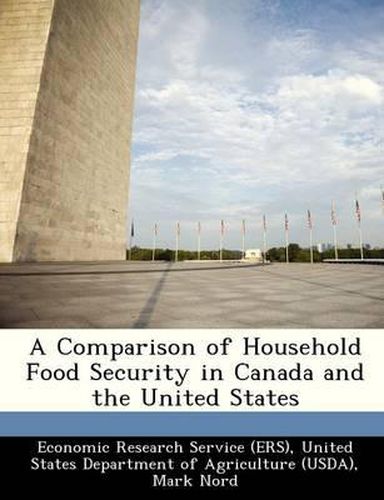Readings Newsletter
Become a Readings Member to make your shopping experience even easier.
Sign in or sign up for free!
You’re not far away from qualifying for FREE standard shipping within Australia
You’ve qualified for FREE standard shipping within Australia
The cart is loading…






Food security-consistent access to enough food for an active, healthy life-is essential for health and good nutrition. The extent to which a nation’s population achieves food security is an indication of its material and social well-being. Differences in the prevalence of household-level food insecurity between Canada and the United States are described at the national level and for selected economic and demographic subpopulations. Associations of food security with economic and demographic characteristics are examined in multivariate analyses that hold other characteristics constant. Comparable measures of household food security were calculated from the nationally representative Canadian Community Health Survey Cycle 2.2 (2004) and the U.S. Current Population Survey Food Security Supplement (2003-05). Based on the standard U.S. methodology, the percentage of the population living in households classified as food insecure was lower in Canada (7.0 percent) than in the United States (12.6 percent). The difference was greater for the percentage of children living in food-insecure households (8.3 percent vs. 17.9 percent) than for adults (6.6 percent vs. 10.8 percent). These differences primarily reflected different prevalence rates of food insecurity for Canadian and U.S. households with similar demographic and economic characteristics. Differences in population composition on measured economic and demographic characteristics account for only about 15 to 30 percent of the overall Canada-U.S. difference.
$9.00 standard shipping within Australia
FREE standard shipping within Australia for orders over $100.00
Express & International shipping calculated at checkout
Food security-consistent access to enough food for an active, healthy life-is essential for health and good nutrition. The extent to which a nation’s population achieves food security is an indication of its material and social well-being. Differences in the prevalence of household-level food insecurity between Canada and the United States are described at the national level and for selected economic and demographic subpopulations. Associations of food security with economic and demographic characteristics are examined in multivariate analyses that hold other characteristics constant. Comparable measures of household food security were calculated from the nationally representative Canadian Community Health Survey Cycle 2.2 (2004) and the U.S. Current Population Survey Food Security Supplement (2003-05). Based on the standard U.S. methodology, the percentage of the population living in households classified as food insecure was lower in Canada (7.0 percent) than in the United States (12.6 percent). The difference was greater for the percentage of children living in food-insecure households (8.3 percent vs. 17.9 percent) than for adults (6.6 percent vs. 10.8 percent). These differences primarily reflected different prevalence rates of food insecurity for Canadian and U.S. households with similar demographic and economic characteristics. Differences in population composition on measured economic and demographic characteristics account for only about 15 to 30 percent of the overall Canada-U.S. difference.